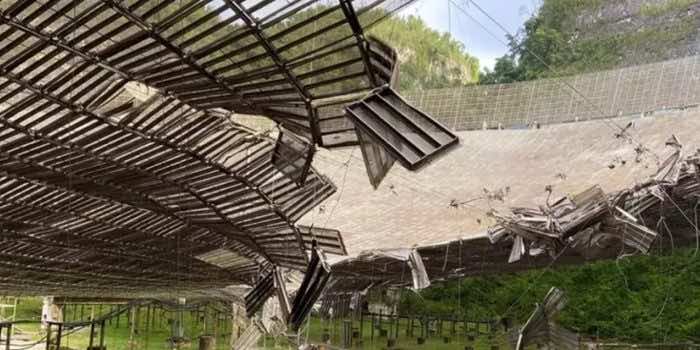The Arecibo Observatory fell in December 2020, and we have its final goodbye now.
Scientists used the data collected by Arecibo between December 2017 and December 2019 and released the largest radar-based report on near-Earth asteroids ever published.
The report was published on September 22 in The Planetary Science Journal. It comprised detailed observations of 191 near-Earth asteroids, including nearly 70 that are referred to as “potentially hazardous.”
It is good news as these new asteroids do not come as a threat to Earth. NASA states that we are safe from a fatal asteroid attack for at least 100 years.
Nevertheless, scientists still study near-Earth objects as there is always a probability that the asteroid will shift its course and head toward our planet.

The new report also flagged several asteroids that can prove valuable if studied. The list includes an oddball space object called 2017 YE5 – an ultra-rare “equal mass” binary asteroid, made of two nearly identical size rocks that are continuously orbiting one another.
The asteroid’s high radar reflectivity hints towards an abundance of water ice beneath its surface. This is the first time this kind of asteroid is discovered.
With this new “treasure trove” of data, scientists can have more accurate information about the asteroids’ shapes, sizes, and spin periods, which are vital measurements for assessing the risks that the asteroids may pose to our planet, lead study author Anne Virkki, a researcher with the Department of Physics at the University of Helsinki in Finland, said in a statement.
“The amount of valuable data collected is unique, and these results could not have been achieved with any other existing facility,” study co-author Flaviane Venditti, head of Arecibo’s Planetary Radar Science Group, added.
The Arecibo Observatory was developed in 1963 and it was the world’s largest and most powerful radio telescope.

Not long ago, Arecibo’s observations of asteroids directly helped plan NASA’s Double Asteroid Redirection Test (DART) mission, in which scientists crashed a spacecraft into the near-Earth asteroid Dimorphos and changed its orbital period by 32 minutes.
Arecibo’s career ended out of the blue in December 2020, after two critical support cables snapped. This led to the complete collapse of the telescope.
In October 2022, the National Science Foundation announced that the telescope will not be replaced or repaired.


